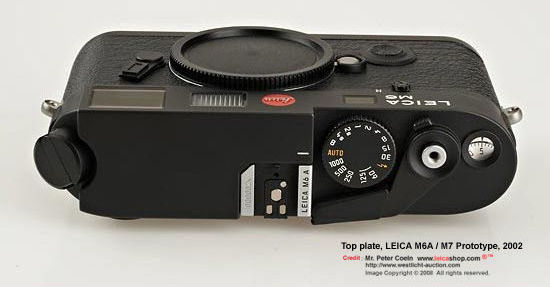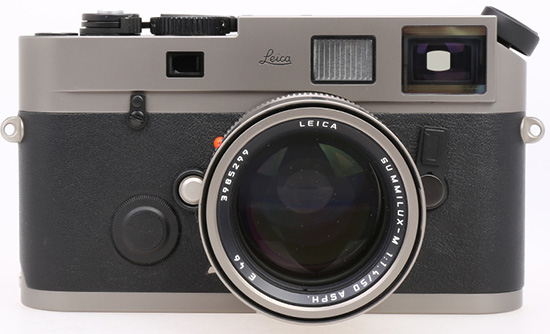Leica Serial Numbers M7
Leica-mount Lenses:Leica IIIby Karen NakamuraOverview and Personal CommentsThe Leica III was a screw-mount, coupled-rangefinder built by Leitz Wetzlar in the early days of WWII: 1933-1939. Leica used different model designations, so the Leica III is known by some as the Leica Model F. It's a bit confusing because the variants of the Leica III are referred to as the IIIa, IIIb, IIIc, etc.
Using lower-case letters. Using the text or images on this website without permission on an ebay auction or any other site is a violation of federal law. The Leica III was followed by the IIIa (1935-1940, 1946-1948), which was in turned followed by the IIIb (1938-1940) and then the IIIc which spanned through the post-War period (1940-41, 1946-). The IIIc is the preferred model by many collectors as it has a solid, die-cast body (rather than separate parts) and a redesigned shutter. The Leica IIIf is one of the most usable since it has flash synchronization, and the IIIg is the best of the III series with its large projected brightframe finder, but it was produced in small numbers, is rare, and very expensive.When buying the kit above, I was told I was buying a IIIc, but it ended up being a plain-old III instead. Ignore the photo captions on this page that say it's a IIIf, it's really a III. Here's what I should have asked to make sure that I got the camera I wanted: ModelDateFeaturesLeica III1933Top shutter speed 1/500 sec, slow speed split at 1/20 secLeica IIIa1935+Top shutter speed 1/1000 secLeica IIIb1938+Viewfinder/rangefinder moved close togetherLeica IIIc1940+Diecast body, body slightly larger, serial #360175 or greaterLeica IIId1931Very rareLeica IIIf1950+Flash synchronizationLeica IIIg1957+Large brightframe viewfinderInteresting quirksThe Leica shutter is horizontal running and is made of rubberized cloth.
The shutter design is basically unchanged up to the current Leica MP (2003).The IIIf viewfinder is framed only for the standard 50mm lens and is not parallax corrected. There is a separate rangefinder window. Many people find this system to be complicated and a pain in the neck. Others appreciate the high magnification of the rangefinder and find switching eyes to not be that complicated.If you use lenses other than the standard 50mm, then you need to use an r. The Leica VIDOM (released circa 1933) is pictured here.
It looks neat but in practice is not that easy to use. It's laterally reversed which means things are mirror-imaged (it gets particularly weird when you pan left and everything moves right). Rather than zooming like the, it instead just shrinks the frame. So when you are at 135mm (the longest focal length), you're looking down a rather long tunnel at a small image. It is, however, parallax corrected.The Leica M3 was released in 1954 and represented the end of the Barnack-series of screwmount Leicas. I have write-ups of the, ), and.Rangefinder CalibrationIt's very easy to knock rangefinder cameras like the Leica III out of horizontal or vertical RF calibration with small knocks or jars.

This is fairly common on older (and even newer) rangefinders. Thankfully, Leitz provided for a way to adjust both horizontal and vertical RF calibration without opening the camera up.The external adjustment is behind the large screw in the lower corner of the front viewfinder window. The outer screw is just a decorative cover; the actual adjustment is inside. It takes a VERY tiny screwdriver.
The adjusting screw moves in and out as you focus the lens, so you may find it's easier to reach at either the infinity position or the close focus position, depending on your particular screwdriver.Before you adjust it, check the vertical adjustment - on a P (as with other V/VI - series Canons, and old Leicas) changing the vertical adjustment affects the horizontal adjustment, so if the vertical adjustment is off, it will affect the horizontal adjustment too. I find the vertical adjustment seems somewhat more likely to get knocked out of whack.This is adjusted in the traditional Leica fashion by removing the knurled decor ring around the round rangefinder window, and turning the round glass front. This is actually a shallow prism and moves the RF image in a circle as you turn it. After you've adjusted it, you have to check the horizontal adjustment and reset it if necessary.- Jim WilliamsNote: This operation while simple, has the possibility of fouling your camera if you have the wrong size screwdrivers or slip while the driver is inside the camera. Please use reasonable and appropriate caution when thinking about doing this.You'll notice the color and sheen of the lens is slightly different from the camera body.

Justin Scott in Australia wrote in saying:The finish on this Elmar is nickel. About Leitz/LeicaLeitz was originally a microscope and scientific optics company. The first series of screwmount Leicas were designed by Oskar Barnack and have been named Barnack cameras by some. The prototype Ur-Leica was designed in 1918, but mass production did not start until 1925 when the Leica I came out. I have a write-up of the.The rangefinder was released in 1954 and represented the end of the Barnack-series of screwmount Leicas. The M-series had an integrated viewfinder/rangefinder with automatically switching projected framelines, coincident and split-image rangefinder, lever wind, hinged rear door, integrated shutterspeed dial, and M-bayonet mount.
I have write-ups of the,. The ) is technically not an M-Leica but it uses the M-bayonet mount.The design of the Leica M has not changed considerably since the of 1954. In 1967, the M4 came out with a crank-rewind instead of a knob rewind.

Vintage Leica Serial Numbers
Since then, the M series remained essentially unchanged from the Leica M4 (1968) up to the current M7. The only difference is that the has an electronically controlled shutter and automatic exposure metering. (This leaves out the fiasco of the M5 which was considerably different and considerably unpopular at the time).Leica's single-lens reflex (SLR) cameras have not been as popular as their rangefinders.
I have write-ups of the original camera as well as the newer and SLRs and the.Leitz. And in 2000, fashion conglomerate Hermes bought 31% of Leica's stock. The only tangible result of this has been the emergence of the Hermes Special Edition Leica MP, dressed in the best coach leather and costing a mere US$8000.On the Net. Tim Goldsmith's review of the. David Kilpatrick's review of the.
Chris Ozdoba's excellentJapanese Pages:. Q's. Yosanroom's beautiful w/ gorgeous pictures.
In photography, in-depth knowledge is just as important as the use of finest optical elements. That is why our factory technicians have a profound understanding of Leica products. Whether you own a M-Camera, spotting scope or binoculars, they are there to help you with your Leica product.As experts in their field, they know how to ensure the quality, precision, long life, and intrinsic value of your product.
Furthermore, they strive to find the best solution for your individual needs – from counsel to sales and repair & maintenance services. How to place a repair orderYour Leica product doesn’t meet your expectations? This is how you can send it in for servicing:Send us the product via mail, courier or parcel service. Please enclose your name, address, phone number, fax or e-mail address and a description of the malfunction. To benefit from your warranty, please enclose the correspondent warranty card as well (e.g. A copy of the valid warranty card and/or of the invoice, indicating the date of purchase).To place your repair order, please download the form 'Repair and Service Form' below and enclose it to your shipment. In case you are sending in your product from outside the European Community, please download the form 'Repair and Service Pro Forma Invoice' below.If you are located in the United States, please download the 'Repair & Service Form', and enclose it with your shipment as well.
Important information for shipments from outside the EUPlease be advised that customs handling can take 5-7 days, the processing period for your order between arrival of the product and confirmation of receipt will therefore be delayed. You will receive confirmation of receipt as soon as your equipment has been registered after customs release.To enable the fastest customs processing possible, we strongly recommend to ship with UPS or FedEx. With transport by other carriers the process will take considerably longer.Our Customer Care representatives gladly support you if you have questions regarding customs and shipping.Please contact us via E-Mail or by phone under +49(0)6441-2080-189. Latest information concerning the CCD sensors of the Leica M9 / M9-P / M Monochrom and M-E camera models (price change)Following the successfully begun and largely completed replacement programme for corroded sensors that affected M9, M9-P, M Monochrom and M-E camera models, we would now like to inform you about how this programme will be handled in the future.Until further notice, we will be continuing to offer free replacement of affected sensors for the camera models stated above that were purchased as new products within the past five years.For further information please click. Pick-up ServiceLeica’s exclusive Pick-up Service is quickest and easiest way to send in your Leica product for service.
Simply give our Customer Care Representatives or your local Service Partner a call. Your goods are collected directly from you on the agreed day. All you need to do is package the device and enclose your warranty card to your repair order.This service is free of charge under warranty. However, you may also take advantage of this service outside the warranty period for a small fee. New IATA (International Air Transport Association) regulations for the transportation of lithium-ion batteries by airThe international regulations of the IATA (International Air Transport Association) for the transportation of lithium-ion batteries by air have been changed and came into force with effect from 1 April 2016:This also affects the shipping of Leica products with used lithium-ion batteries. In compliance with the new IATA regulations, Leica Customer Care must call your particular attention to our new ruling that lithium-ion batteries may no longer be shipped together with products submitted for repair.All batteries contained in the cameras must be removed from the product before shipment and safely stored.
Furthermore, any product accessories or equipment not required for the purposes of the repair should be handed back to the customer for safekeeping.Thank you for your support in helping us to comply with the new IATA regulations and for your valuable contribution to safety and sustainability.